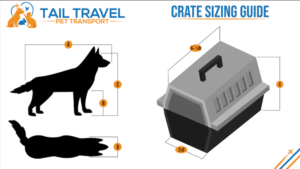Tail Travel is a family-owned and operated pet transport business based in Alice Springs, in the Northern Territory of Australia. Tail Travel has successfully coordinated air freight transport requirements for 1000s of animals Australia wide. We have agents in the capital city of all Australian states and Territories as well as agents located close to many major regional airports. Although we specialise in reptiles, dogs and cats, Tail Travel can organise air freight from the smallest insect to the largest animal for you. We freight with Qantas and Virgin airlines and their affiliates. Tail Travel understand how precious your animals are and treat them as if they were our own!
About Us
Contact Info
Address
Alice Springs, Northern Territory, 0870
Phone
Email
Newsletter Subscribe
© Tail Travel 2021, All Rights Reserved.
Frogs & other amphibians - Tail Travel
- Home
- Frogs & other amphibians
Transporting Frogs and Toads.
Many frog owners cherish their amphibious companions and want to ensure their safe transport, whether for relocation, holidays, or other travel needs. Air travel can be stressful for both you and your frog, so careful planning is essential to make the journey smooth, safe, and compliant with regulations. We transport frogs all over Australia, but there are several factors to consider before packing up your frog and heading to the airport:What species is your frog?
Is your frog in good health?
Are there biosecurity or state-specific restrictions?
These factors will influence how we transport your frog. To help us better understand your frog’s travel needs, let’s explore the key considerations below.
Not All Frogs Are Created Equal
Most frogs can be transported without issue, but certain species or conditions require special attention due to biosecurity laws, airline policies, or the frog’s unique needs. Restricted or Prohibited Species: Some states and territories in Australia restrict the movement of certain frog species to protect local ecosystems. For example, a Wildlife Import/Export Permit may be required. If you’re unsure about your frog’s status, Tail Travel staff can assist in identifying state-specific requirements.Container Size Matters!
All frogs must travel as animal cargo on a plane and spend the flight in an airline-approved container. These containers are typically rigid plastic with ample ventilation and must meet International Air Transport Association (IATA) standards. Key requirements include: The container must be secure to prevent escapes. Frogs and toads tend to jump, so the height should be limited to prevent injury to their snouts. It must be lined with moist paper towels or a damp sponge to maintain humidity, but avoid excessive water to prevent drowning. No wheels or collapsible designs are permitted. The container should be sized appropriately—too large, and the frog may injure itself; too small, and it could be rejected by the airline. If you don’t have a container, Tail Travel can assist in selecting the right one based on your frog’s size and species.If you can provide us with your frog’s species, size, and weight, we’ll recommend the best container for its journey.
Preparing Your Frog for Travel
Here are some essential tips to ensure your frog’s safety and comfort during air transport:- 1. Check Regulations: Confirm state and territory rules on amphibian transport. Some regions restrict certain species due to biosecurity concerns.
- 2. Obtain Permits: Secure a Wildlife Import/Export Permit if required for your frog’s species.
- 3. Health Check: Ensure your frog is healthy and not overly stressed, sick, or injured before travel.
- 4. Hydration: Keep your frog hydrated prior to the trip, but avoid excessive water in the container.
- 5. No Feeding: Do not feed your frog 48 hours before travel to reduce stress and prevent regurgitation.
- 6. Temperature Control: Maintain a stable temperature range (typically 18-24°C, depending on species) and avoid direct sunlight or extreme temperatures.
- 7. Container Labeling: Clearly label the container with:
- “LIVE ANIMALS – HANDLE WITH CARE”
- Frog species name
- Sender and receiver contact details
- 8. Acclimation: Introduce your frog to the container days or weeks in advance to minimize travel stress.
- 9. No Sedatives: Avoid tranquilizers unless prescribed by a veterinarian.
- 10. Post-Arrival: Pick up your frog promptly, check for stress or dehydration, and allow acclimation in a quiet, temperature-controlled environment.
Pet Container Requirements
As a frog owner, you must provide a container that meets IATA and airline standards. Failure to comply may result in the airline refusing transport. The container must:- A. Be a rigid, well-ventilated plastic container to prevent escapes and ensure airflow.
- B. Have limited height clearance to prevent jumping injuries.
- C. Be lined with moist paper towels or a damp sponge for humidity (no standing water).
- D. Be strong, non-collapsible, and wheel-free.
- E. Not exceed airline weight limits (typically 65 kg including the frog, but this varies by carrier).
Book with a Specialist
Most Australian airlines require amphibians to be shipped via a licensed pet transport company like Tail Travel. We can advise on the best carriers, flights, and container options to suit your frog’s needs. Contact us to streamline the process.Conditions Requiring Extra Care
If your frog falls into any of these categories, additional precautions or veterinary clearance may be required:- 1. The frog is a restricted or protected species under biosecurity laws.
- 2. The frog is unwell, stressed, or recovering from injury.
- 3. The frog is very young or elderly, requiring special temperature or humidity controls.

